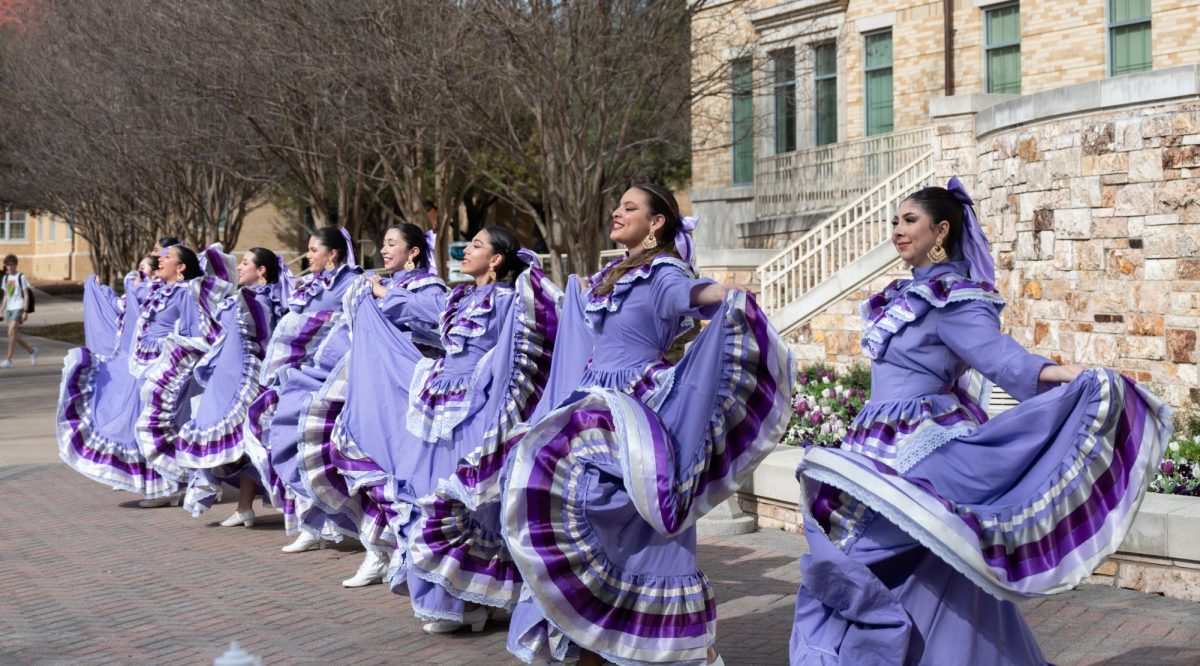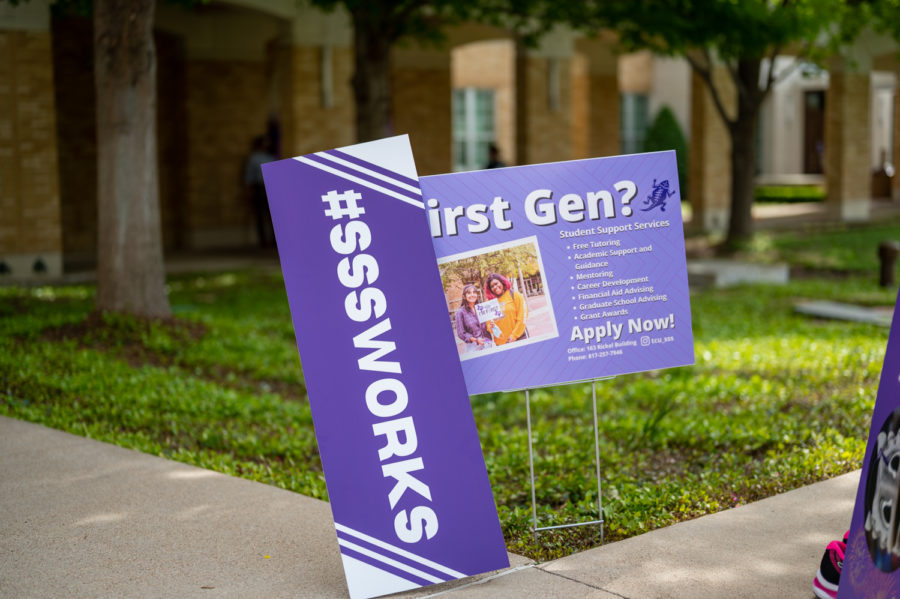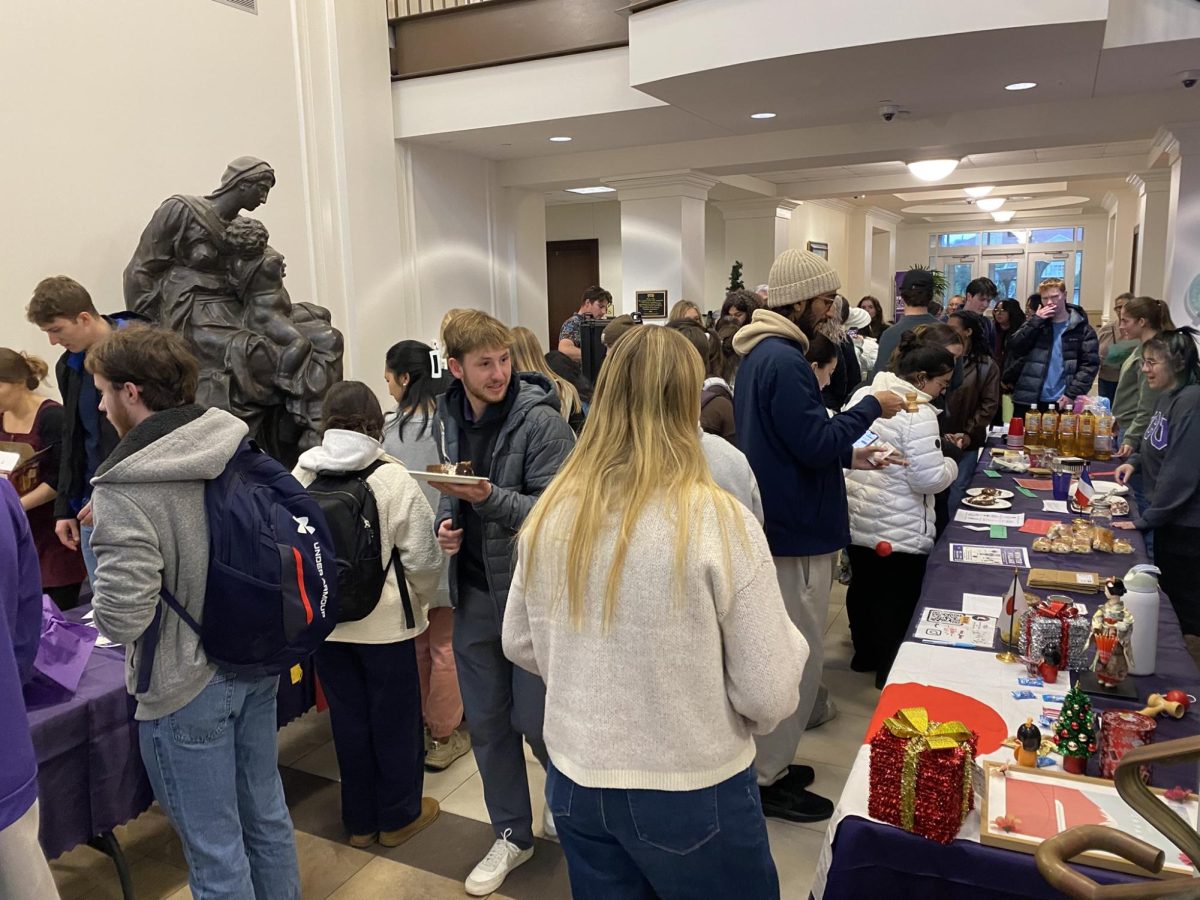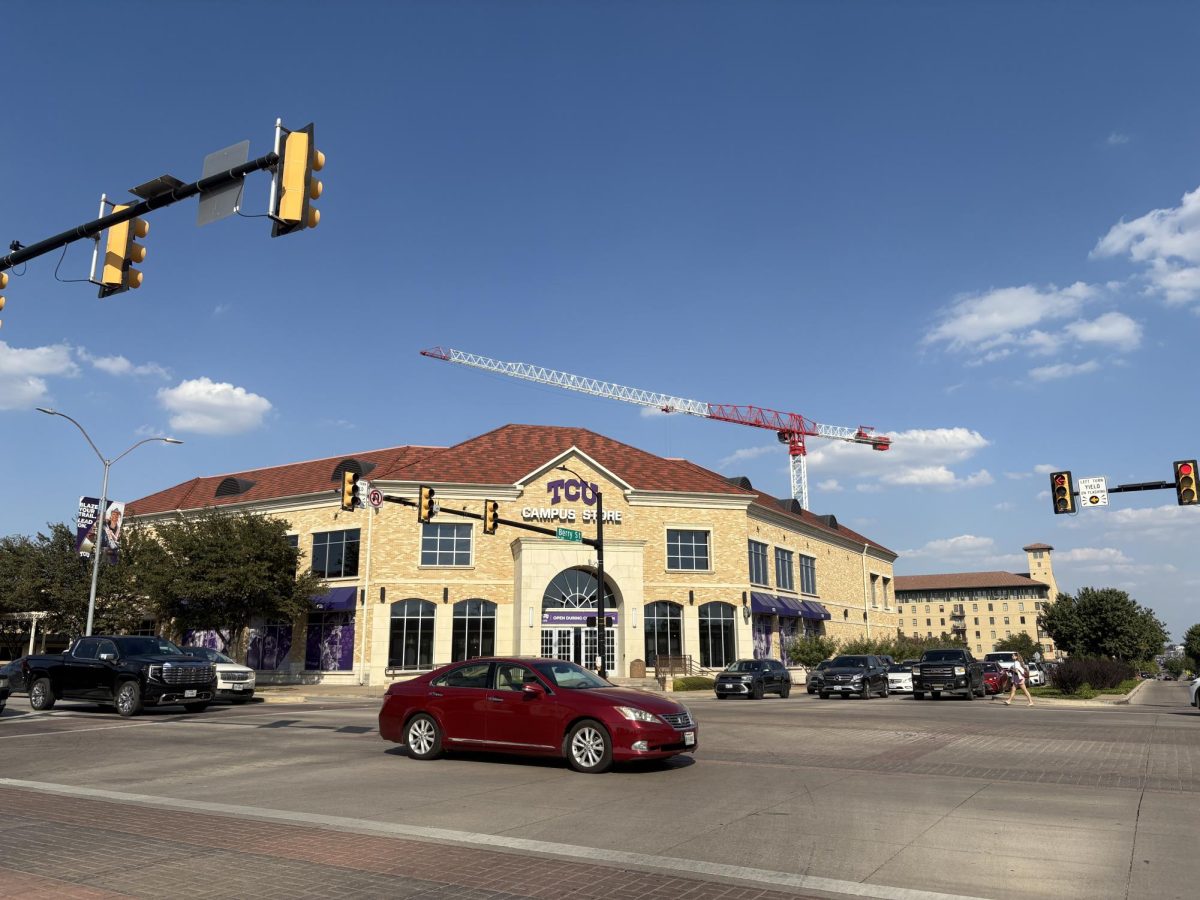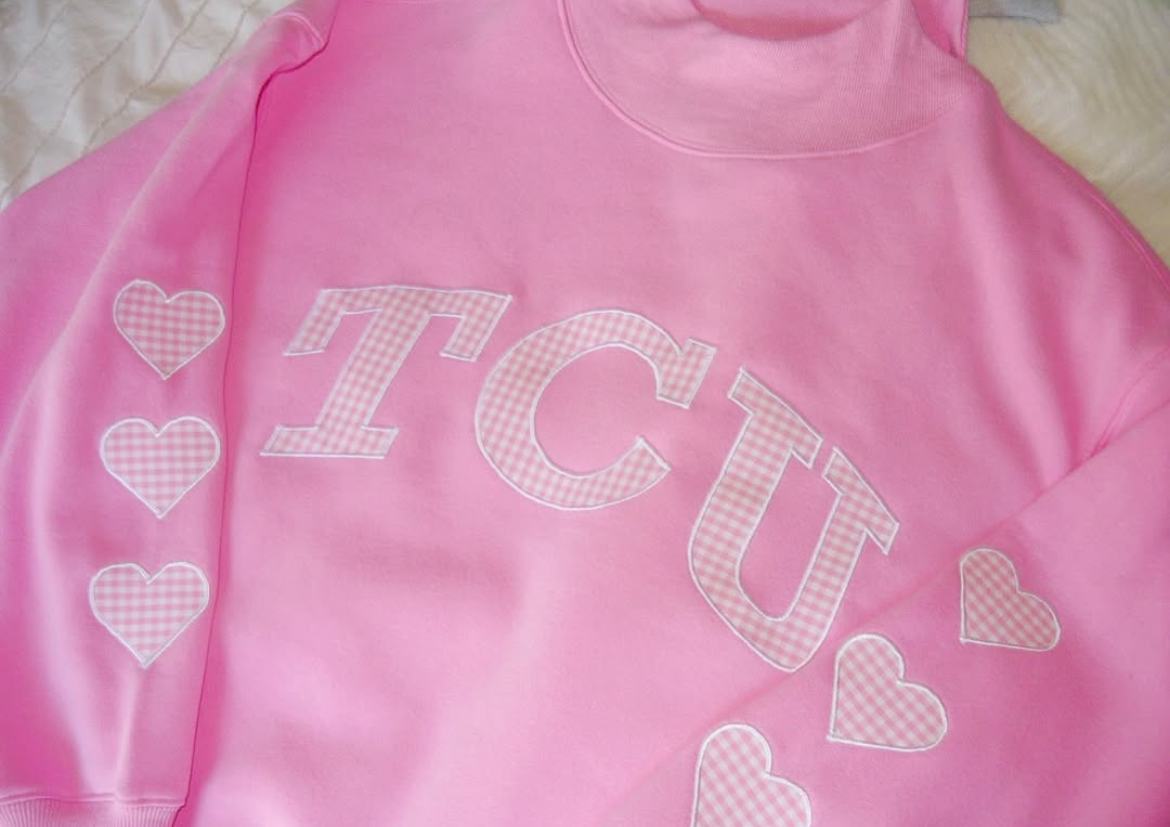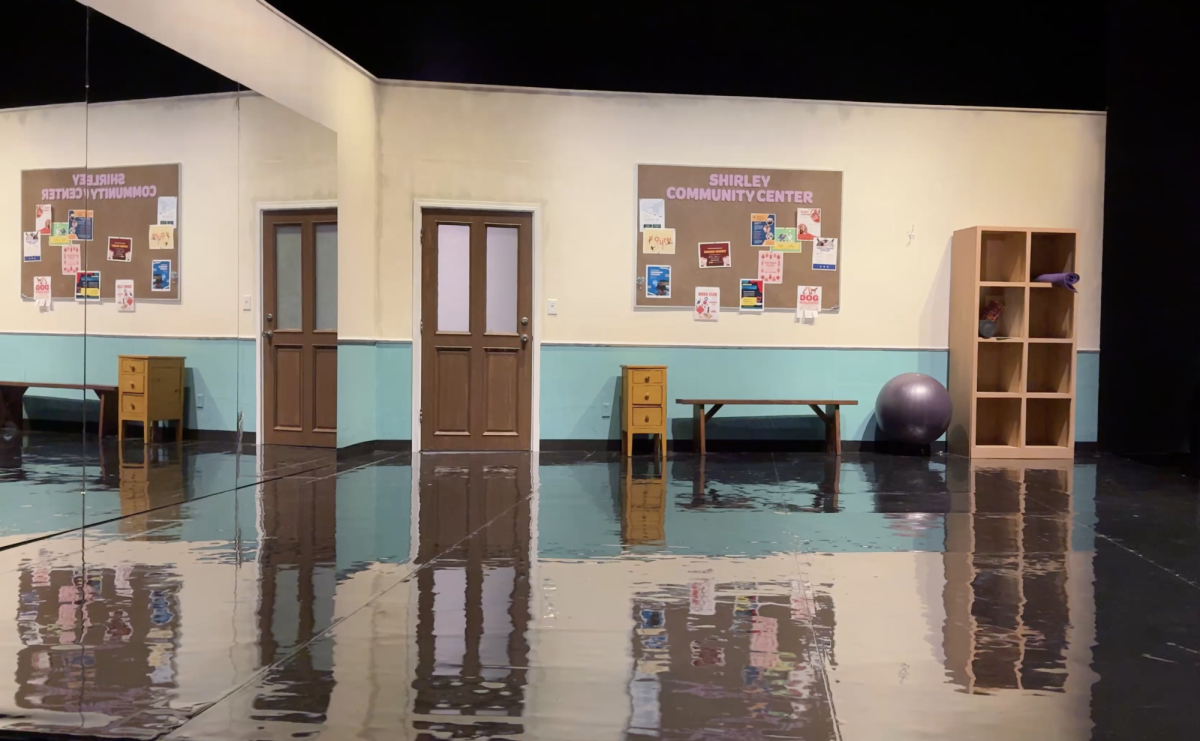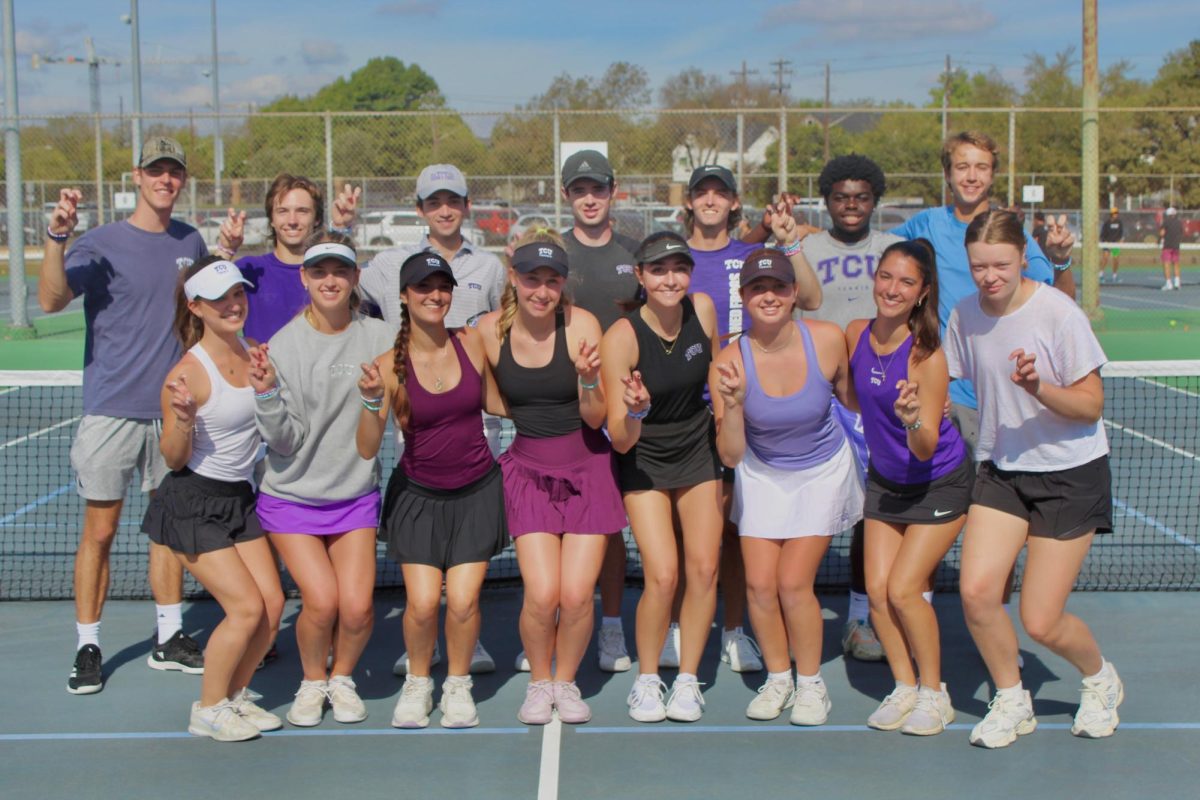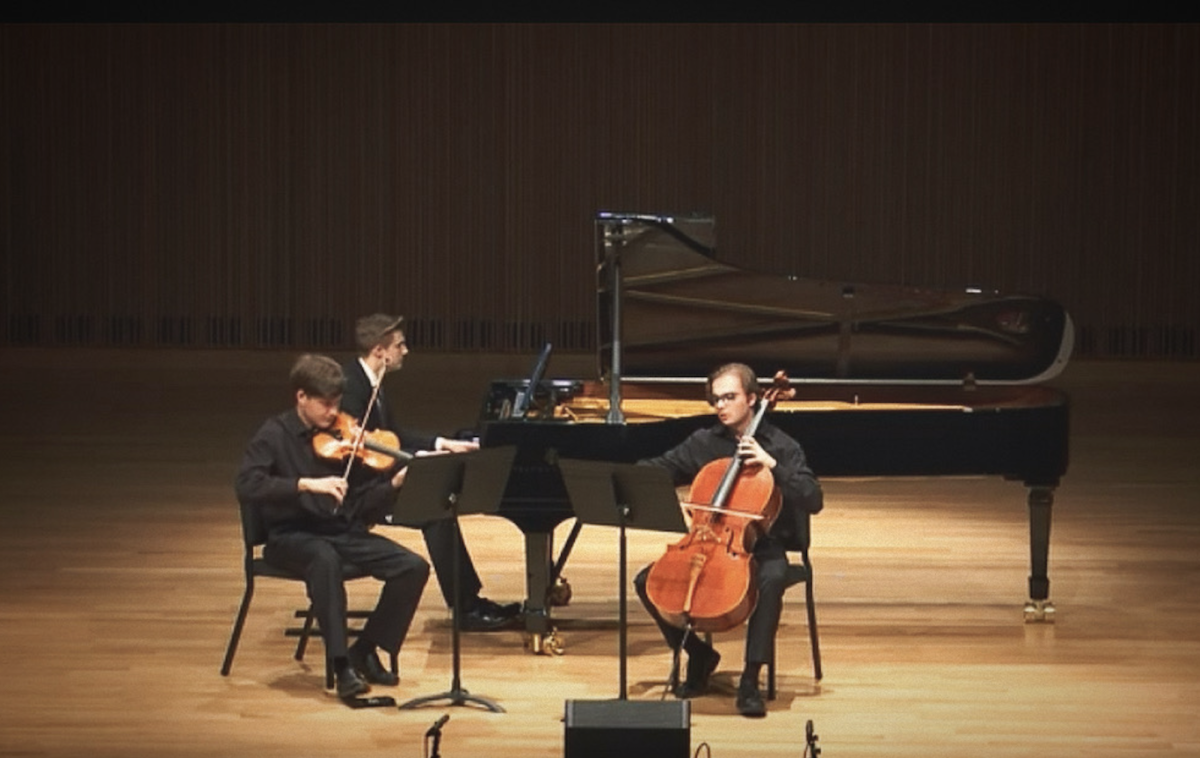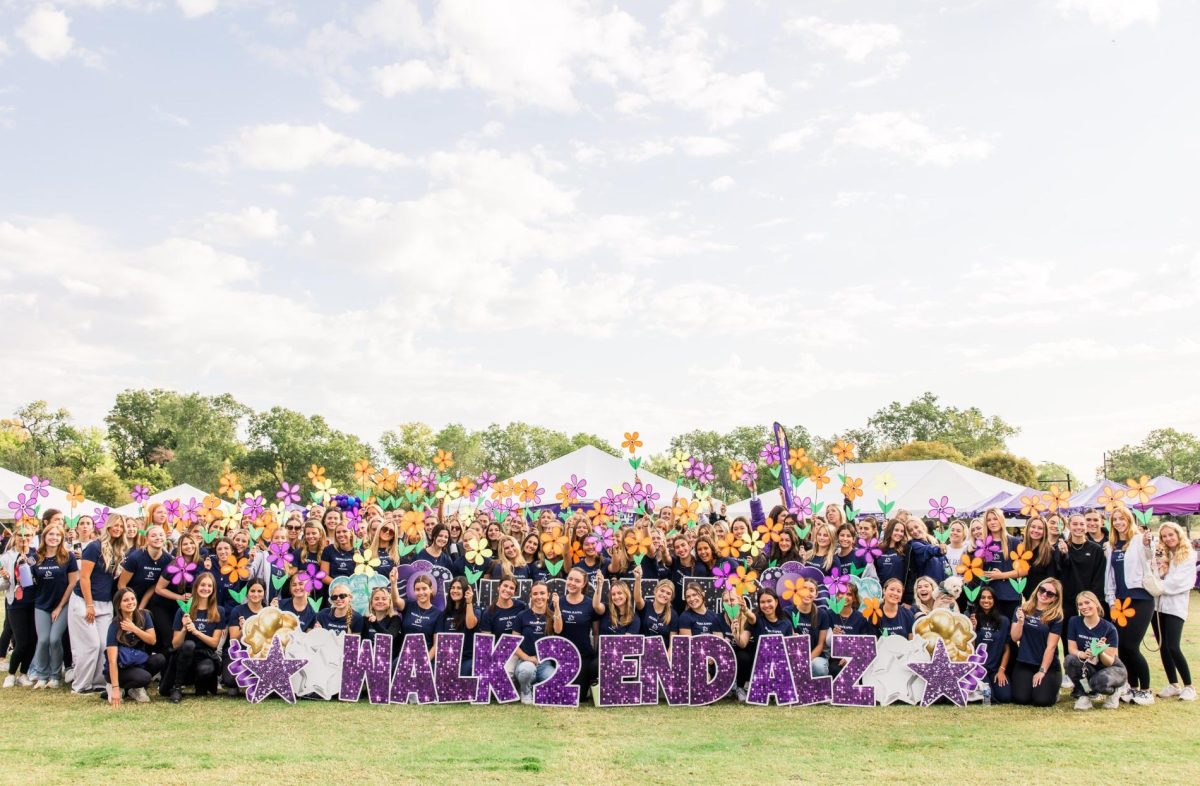On the windy Wednesday afternoon before spring break, TCU’s Ballet Folklórico and theCrew invited people to gather by Frog Fountain to commemorate Women’s History Month with an afternoon of dancing and fun activities.
When planning this event, the group wanted to combine Women’s History Month and cultural representation to create something that everyone could enjoy. Claudia Tiffany Rodriguez, the group’s founder and choreographer, said that the idea was to promote female empowerment through cultural dance.
The event started off with a Jalisco-style performance from the ballet folklórico dancers to the song “La Negra,” setting the tone for what would be an afternoon of rich cultural experiences.
Ballet Folklórico and TCU’s theCrew also provided tacos from Salsa Límon, pan dulce from Esperanza’s Bakery, free dance lessons, Mexican candies, lotería tables and other items and activities.
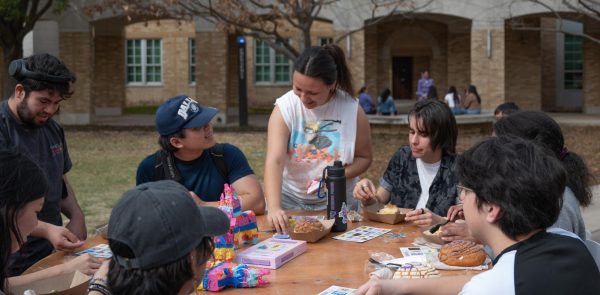
In the background, a playlist of the greatest hits in Latin music played as the dancers walked around taking pictures and talking to the attendees in hopes of getting people to engage with Mexican culture in accessible ways.
“Mexican candies and things like that, lotería, I’m sure like, those are very much big things that Mexican culture that a lot of people have probably either seen before and just not known what they are,” Alexis Garcia, the director of TCU’s Ballet Folklórico, said. “So we just felt like those little things were an easy way to be able to connect with an audience.”
The theme of bringing the community together and introducing Mexican culture to the campus was integral to every part of the event, down to the dance styles the organization chose to perform and teach. Rodriguez said that the choreography and costumes worn by the girls are Jalisco-style and are considered one of the most recognizable styles of ballet folklórico.
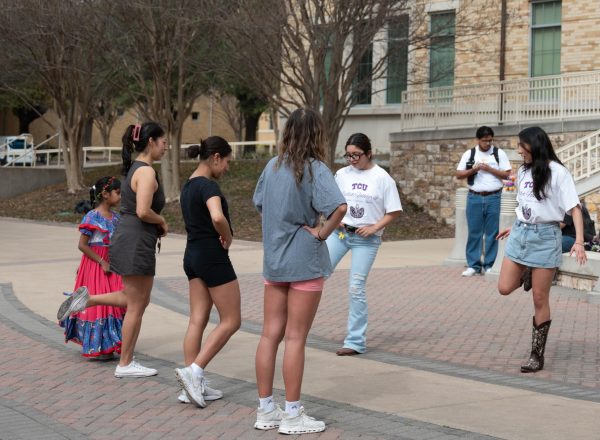
The style they decided to teach, known as Baja style, originates in Baja California and Mexican ranchero culture, making it feel familiar to the audience at TCU due to its ties to cowboy culture.
The event was attended by students, faculty and locals, all of whom wanted to support the dancers. One attendee, a younger brother to one of the dancers, said that he found it inspiring that she and the TCU campus reached out to the community through this event and noted that they had even taught another young girl how to dance during the event.
By encouraging cultural engagement and showcasing the vibrant art form of ballet folklórico, members of Ballet Folklórico did not just want to promote their organization. They hoped to connect with the TCU community and express their Latina identity with pride.

